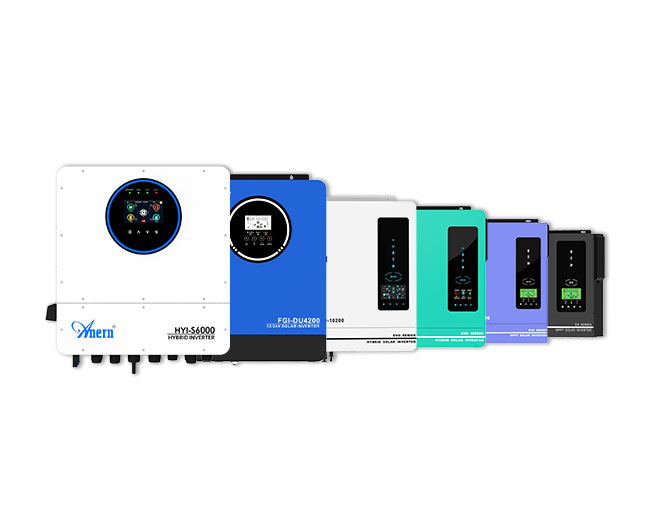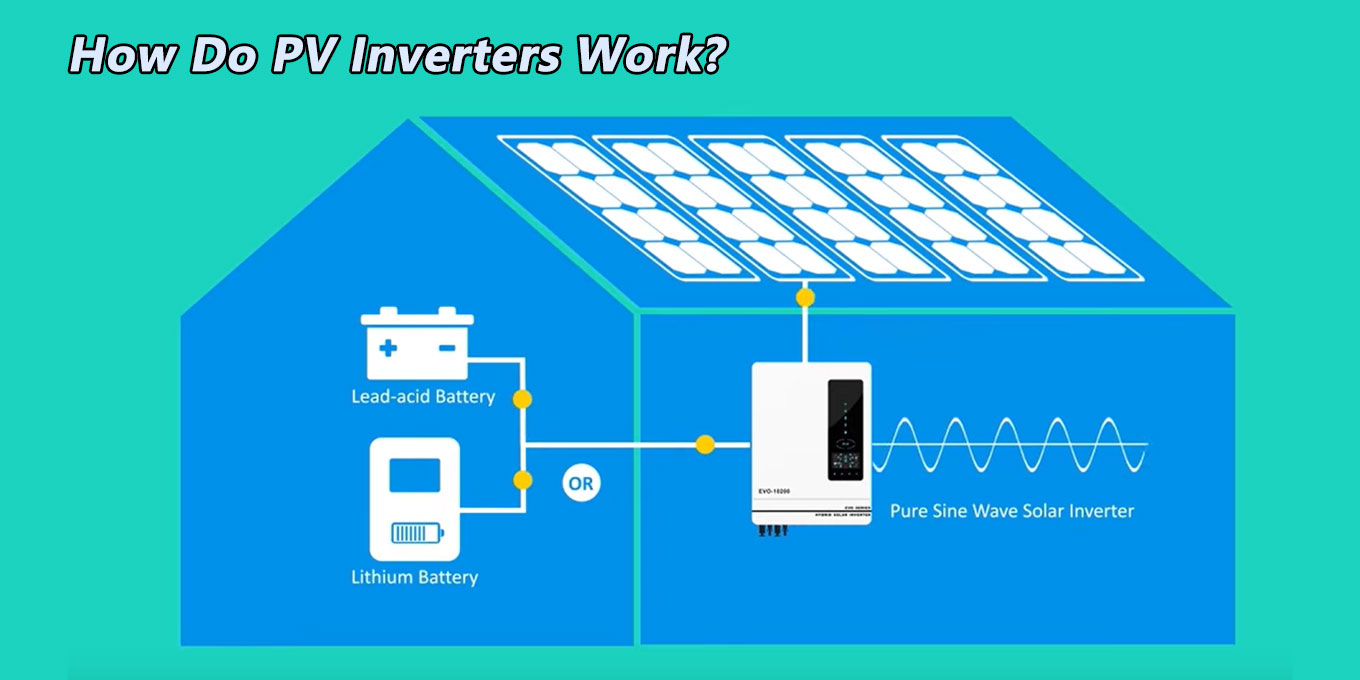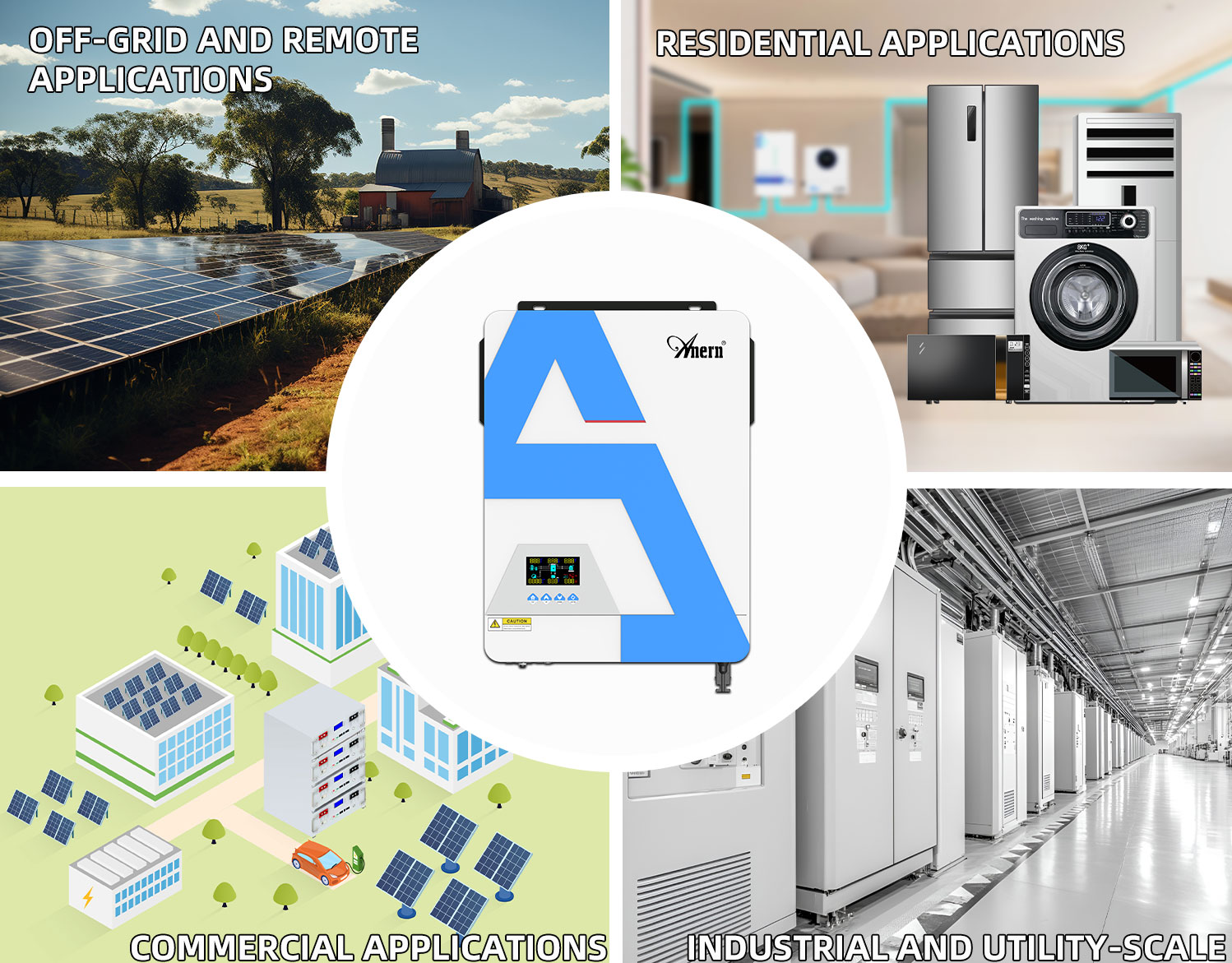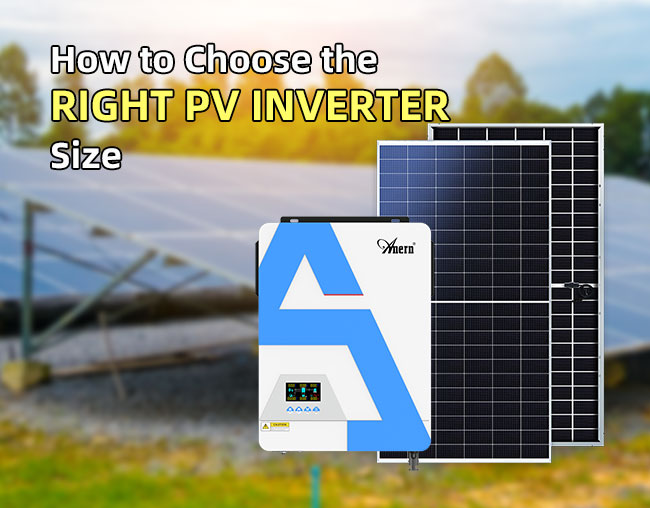
As the world increasingly turns to renewable energy sources, solar power systems have become a popular choice for both residential and commercial applications. One of the most critical components of any solar power system is the PV inverter. But with so many options available, how do you choose the right one for your needs? In this comprehensive guide, we will delve into the intricacies of PV inverters for sale, exploring their functions, types, applications, and key considerations to help you make an informed decision. Whether you’re a homeowner looking to reduce your energy bills or a business aiming to achieve sustainability goals, understanding PV inverters is crucial for optimizing your solar power system’s performance and efficiency. Let’s embark on this journey to discover which inverter pv solar is best suited for your unique energy requirements.
A PV inverter, also known as a photovoltaic inverter, is a critical component in solar energy systems. Its primary function is to convert the direct current (DC) electricity generated by solar panels into alternating current (AC) electricity, which is the standard form of electricity used by most household appliances and the electrical grid. Without a PV inverter, the solar energy harnessed by the panels would be unusable for most practical applications. These pv inverters come in various types, including string inverters, microinverters, and power optimizers, each offering unique benefits depending on the specific needs and scale of the solar installation.
In addition to converting DC to AC, modern PV inverters often come equipped with advanced features that enhance the efficiency and reliability of solar energy systems. For instance, many pv inverters include maximum power point tracking (MPPT) technology, which optimizes the power output from the solar panels by continuously adjusting the electrical operating point. Some solar energy inverters also offers monitoring capabilities, allowing users to track the performance of their solar system in real-time through mobile apps or web interfaces. By ensuring optimal energy conversion and providing valuable insights into system performance, solar panel inverters play a pivotal role in maximizing the return on investment for solar energy systems.

Convert DC to AC: Solar panels generate direct current (DC) power, but household appliances and the electrical grid require alternating current (AC) power to function. A PV inverter is crucial in this conversion process, ensuring that the solar energy harnessed by your panels can be effectively used to power your home or business.
Maximize Efficiency: A high-quality pv inverter is essential for minimizing energy loss during the DC to AC conversion. Advanced solar pv inverters employ technologies such as maximum power point tracking (MPPT) to optimize the energy output from your solar panels, ensuring that you get the most out of your solar investment.
System Monitoring: Many modern pv inverters for sale come equipped with real-time performance tracking and smart integrations. These features allow you to monitor your solar power system’s performance through user-friendly mobile apps or web interfaces. Real-time data on energy production and consumption helps you make informed decisions about your energy usage, ensuring that your system operates at peak performance.
At Anern, our pv inverters are designed for efficiency, durability, and seamless integration into both residential and commercial solar setups. We prioritize advanced technology and robust construction to provide you with reliable, high-performance solutions that meet your energy needs. Whether you’re looking to power a small home or a large commercial facility, our solar pv inverters offer the perfect blend of innovation and reliability to help you achieve your solar energy goals.

Photovoltaic (PV) inverters play a vital role in converting the direct current (DC) electricity generated by solar panels into alternating current (AC) electricity, which is compatible with household appliances and the power grid. This conversion begins with the inverter receiving the variable DC output from the solar panels. Using advanced technologies like Maximum Power Point Tracking (MPPT), the pv inverter continuously adjusts the electrical operating point of the panels to extract the maximum possible power under varying weather and shading conditions.
Once the optimal DC energy is collected, the inverter uses high-frequency switching and electronic circuitry to invert the current into a smooth and stable AC output. In grid-tied systems, the inverter also synchronizes the phase and frequency of its output to match the local utility grid, ensuring safe and efficient energy integration. Modern PV inverters for sale may also include monitoring systems, fault detection, and safety mechanisms, making them not only a conversion tool but also a smart controller that enhances overall system performance and reliability.
Selecting the right PV inverter depends on your solar system's size, budget, and specific requirements. The photovoltaic industry offers several pv inverter types, each with unique advantages and ideal use cases. Whether you're powering a home, business, or large-scale solar farm, understanding these options will help you make an informed decision.
At Anern, we specialize in manufacturing high-efficiency inverters across all categories, ensuring seamless energy conversion for every application. Below, we break down the most common solar PV inverter types, their key features, and which scenarios they suit best—helping you choose the perfect match for your solar system.
String inverters are the most common type of inverters used in both residential and commercial solar power systems. They work by connecting multiple solar panels in series, forming what is known as a “string.” The collective direct current (DC) output from these panels is then converted into alternating current (AC) by the string inverter, making it suitable for use by household appliances and for feeding into the electrical grid. One of the main advantages of string inverters is their cost-effectiveness. They are generally less expensive than other types of inverters, making them an attractive option for budget-conscious consumers.
However, solar string inverters do have some limitations. Their efficiency can be significantly affected if any of the panels in the string are shaded or oriented differently. This is because the performance of the entire string is determined by the weakest panel. Despite this, string inverters remain a reliable and widely-used option, especially in installations where shading is minimal and panel orientation is uniform. Advances in technology, such as the integration of power optimizers, are also helping to mitigate some of these issues, further enhancing the performance and reliability of string inverters.
Microinverters are a more advanced type of pv inverter that is installed at each individual solar panel. This design allows for independent optimization of each panel, significantly enhancing the overall system efficiency. Unlike string inverters, where the performance of the entire string can be compromised by a single shaded or underperforming panel, microinverters ensure that each panel operates at its maximum potential. This makes them particularly effective in scenarios where shading or varied panel orientations are a concern.
In addition to improved efficiency, microinverters offer superior monitoring capabilities. Because each panel operates independently, users can track the performance of individual panels in real-time, allowing for more precise diagnostics and maintenance. Microinverters also come with increased safety features, such as rapid shutdown capabilities, which can be crucial in emergency situations. While they are generally more expensive than string inverters, the benefits of enhanced efficiency, better monitoring, and increased safety make the microinverter a compelling choice for many solar power installations.
Hybrid pv inverters are a versatile solution that combines the functionalities of string inverters with the added benefit of battery storage systems. This dual capability allows users to store excess solar energy in batteries for later use, providing a reliable power source even during grid outages. Hybrid inverters are particularly beneficial in areas with unreliable grid power, as they offer a level of energy independence that traditional inverters cannot match. By managing both solar energy production and storage, hybrid inverters enable users to maximize their solar investment and ensure a continuous power supply.
In addition to energy storage, hybrid pv inverters offer advanced energy management features. They can intelligently switch between using solar power, stored battery power, and grid power based on real-time conditions and user preferences. This flexibility allows for more efficient energy use and can result in significant cost savings on electricity bills. Hybrid inverters are also compatible with various battery technologies, making them a future-proof option for those looking to expand their energy storage capabilities. Whether for residential or commercial applications, hybrid inverters provide a comprehensive solution for modern energy needs.
Central inverters are designed for large-scale commercial or utility applications, where they handle higher power capacities and manage the energy output from a large number of solar panels. These pv inverters are typically housed in a central location and are capable of converting the DC power generated by extensive solar arrays into AC power for use in large facilities or for feeding into the electrical grid. Due to their high capacity, central inverters are highly efficient for large projects, making them a preferred choice for solar farms and industrial installations.
While central inverters offer significant advantages in terms of efficiency and power handling, they do require more space and maintenance compared to other types of inverters. The centralized nature of these systems means that any issues with the inverter can impact the entire solar array, making regular maintenance and monitoring crucial. Despite these challenges, the scalability and efficiency of central inverters make them an indispensable component for large-scale solar projects. Advances in technology are also helping to improve the reliability and ease of maintenance for these powerful pv inverters, ensuring they remain a viable option for large-scale solar energy production.
| Type | Best For | Advantages | Considerations |
| String | Homes & small businesses | Cost-effective, simple maintenance | Performance affected by shading |
| Microinverter | Shaded or complex rooftops | Optimized output, panel-level control | Higher cost |
| Hybrid | Energy storage & backup systems | Grid-independent, flexible | Slightly more complex installation |
| Central | Large-scale commercial installations | High capacity, efficient for utility | Large footprint, not for small systems |

Choosing the right PV inverter size is crucial for the optimal performance of your solar power system. Here are some detailed guidelines to help you make an informed decision:

1. Understand Your Solar System Capacity
First and foremost, you need to determine the total capacity of your solar power system, measured in kilowatts (kW). The inverter size should generally match or be slightly smaller than the total capacity of your solar panels. An oversized inverter can lead to inefficiencies, while an undersized inverter may not handle the full power output.
2. Consider Inverter Efficiency
Inverter efficiency refers to its ability to convert direct current (DC) into alternating current (AC). High-efficiency inverters minimize energy loss, thereby enhancing the overall performance of your system. Aim for inverters with an efficiency rating of 95% or higher.
3. Evaluate Environmental Factors
Environmental conditions such as temperature and installation location can impact inverter performance. High temperatures can reduce inverter efficiency, so in hot climates, it’s crucial to choose a pv inverter with good heat dissipation capabilities. Additionally, ensure the inverter is installed in a well-ventilated area to maintain optimal operation.
4. Plan for Future Expansion
If you anticipate expanding your solar power system in the future, it’s wise to select an inverter with some extra capacity. This foresight can save you the cost and hassle of replacing the inverter when you add more panels.
5. Check Compatibility
Ensure that the inverter is compatible with your solar panels and other system components. Different brands and models may have varying technical specifications, so it’s essential to read product manuals carefully or consult with a professional before making a purchase.
6. Understand Inverter Types
There are various types of solar panel inverters available on the market, such as string inverters, microinverters, and hybrid inverters. Each type has its own set of advantages and disadvantages. Choose the type that best fits your specific needs and budget.
7. Focus on Brand and After-Sales Service
Opting for pv inverters from reputable brands usually guarantees higher quality and better after-sales service. Check the manufacturer’s warranty policies and customer support services to ensure you can get timely assistance if any issues arise.
8. Budget Considerations
Finally, the cost of the pv inverter is an important factor. While high-quality inverters may come with a higher price tag, their long-term efficiency and low maintenance costs can offer better economic benefits over time.
Understanding the costs associated with installing and replacing solar PV inverters is essential for planning an efficient and cost-effective solar power system. These costs can vary significantly based on several factors, including the type of inverter, the power capacity of the system, and the overall scale of the project. Here’s a comprehensive look at what you can expect:
String Inverters: Cost-Effective and Straightforward
String inverters are often the most cost-effective option for installation. They are particularly well-suited for residential and small commercial solar systems due to their relatively simple design and ease of installation. The lower initial cost makes them an attractive choice for many solar projects. However, it’s important to consider that their efficiency can be impacted if one panel in the string is shaded or underperforming, which can affect the entire string’s output.
Microinverters: Higher Initial Cost, Long-Term Efficiency
Microinverters come with a higher per-watt installation cost compared to string inverters. Each solar panel is equipped with its own microinverter, allowing for individual optimization and monitoring. This setup can significantly reduce long-term energy loss, especially in systems where shading or panel mismatches are a concern. While the upfront investment is higher, the increased energy yield and enhanced system reliability can provide substantial long-term benefits, making them a worthwhile consideration for many installations.
Hybrid Inverters: Advanced Features with Slightly Higher Costs
Hybrid pv inverters offer advanced features such as energy storage management, making them a versatile and future-proof choice for modern solar power systems. These inverters can manage both solar panels and battery storage, providing greater flexibility and energy independence. The installation costs are slightly higher due to their advanced capabilities, but the benefits of energy storage and enhanced system control can justify the additional expense. Hybrid inverters are ideal for those looking to maximize their energy efficiency and take advantage of energy storage solutions.
Central Inverters: Economies of Scale for Large Projects
Central inverters are designed for large-scale solar installations, such as utility-scale solar farms. They require substantial infrastructure but benefit from economies of scale, reducing the per-watt cost when installed in large volumes. These inverters are highly efficient for large projects but may not be suitable for smaller installations due to their size and complexity. For large-scale projects, central inverters can offer significant cost savings and operational efficiencies.
Longevity and Replacement Considerations
The pv inverter replacement typically occurs after 10–15 years of operation. Investing in high-quality inverters with robust warranty options can significantly reduce long-term costs. Anern’s inverters, for example, come with comprehensive warranty options and dependable after-sales service, ensuring that any issues are promptly addressed and minimizing downtime. This support can extend the lifespan of your system and enhance its overall performance, providing peace of mind and long-term savings.
When selecting a PV inverter, it’s crucial to consider a variety of factors to ensure you choose the best option for your solar power system. Here are some key aspects to keep in mind:

When investing in a solar energy system, choosing the right solar inverter supplier for your PV inverter is just as important as selecting the right model. A reliable solar power inverter supplier ensures not only product quality, but also long-term support, system compatibility, and peace of mind.
At Anern, as one of leading solar power inverter manufacturers in China, we specialize in providing a wide range of solar pv inverters tailored for residential, commercial, and industrial use. Whether you need an off-grid inverter for a remote site, a hybrid pv inverter for home energy storage, or a robust solution for a large-scale commercial project, Anern delivers products built to international standards and tested for performance, durability, and safety.
With over 16 years of experience in the solar industry, Anern has built a strong reputation across global markets, serving clients in more than 200 countries. Our team of engineers and solar professionals provides full technical support—from pre-sales consultation to post-installation service—ensuring that every customer receives a solution that fits their specific energy needs.
For distributors, project developers, or system integrators looking for a trusted solar partner, Anern offers not just products, but complete solar solutions backed by innovation, quality control, and ongoing technical expertise. Choosing Anern means choosing a future powered by reliable and sustainable energy.